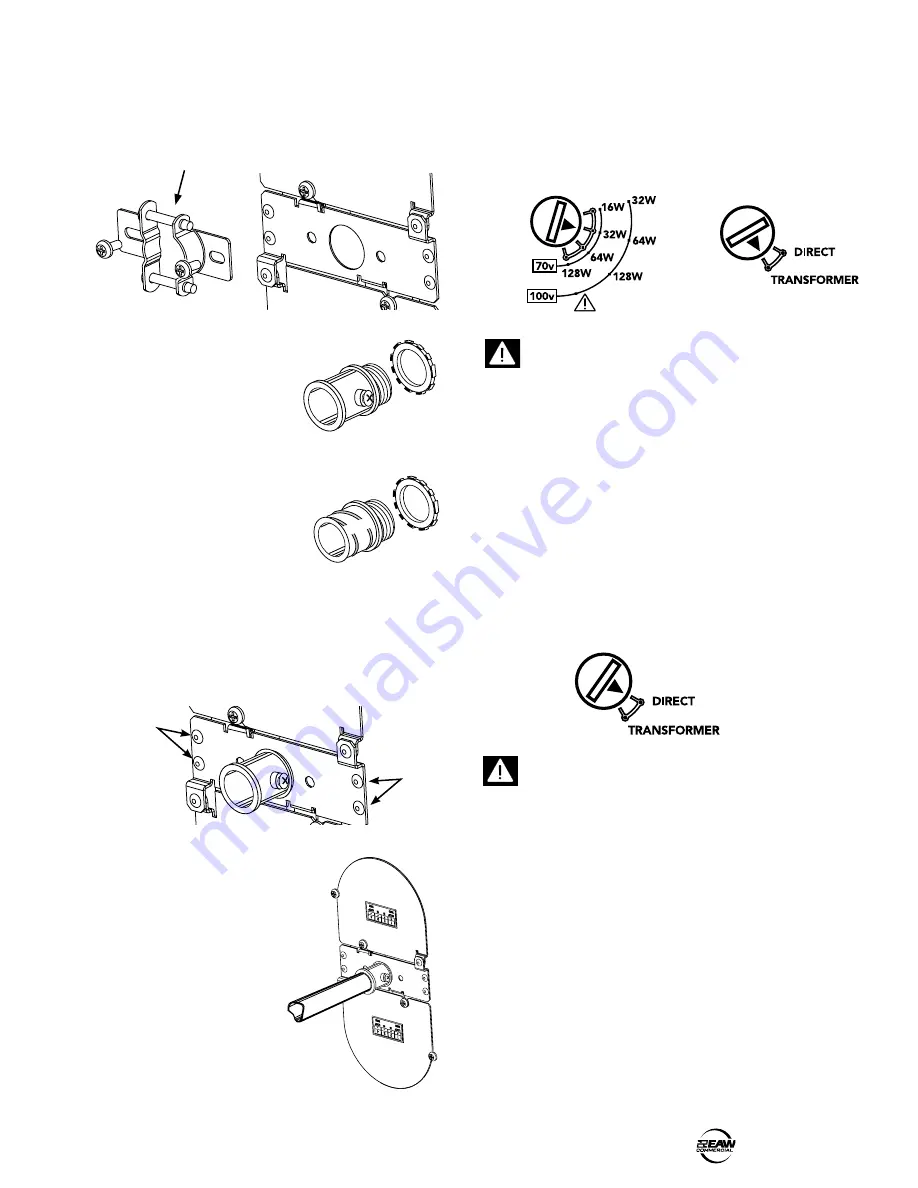
CIS961 and CIS991 –
9
Installation with conduit
1. Remove the two screws holding the strain relief
onto the rear cover, and remove the strain relief
assembly. Keep it safe, in case you need it again.
2. Use a threaded conduit
set-screw coupler
(not supplied): For
1/2" conduit, use
Thomas&Betts Steel
City model TC221-SC
(or UL listed equivalent).
3. If you are using flexible
conduit, then use
Thomas&Betts Steel City
model XC241 flexible
conduit fitting (or UL listed
equivalent).
4. Insert the new coupler into the hole exposed by
removing the strain relief assembly. Fasten the
coupler using the nut supplied with the coupler. It
will help to remove the four side screws holding
the cover plate assembly to the loudspeaker metal
back can, so you can tighten the coupler's nut.
5. Push the speaker cable
through the conduit
coupler, and insert
your conduit into the
coupler. Tighten the
locking screw firmly.
(Or twist flexible
cable onto the coupler
shown in step 3.)
6. Attach the wires to the
supplied Phoenix-type
connector or the screw
terminals as detailed
on the previous page,
and close and lock the input covers.
Setting the Taps
1. Set the tap selector switch, located on the front of
the loudspeaker. In the example shown here, the
tap is set to 32 W for a 70 Volt system, or 64 W
for a 100 V system.
CAUTION:
Make sure that you do not overload
the amplifier. This may cause overheating to
the amplifier, and possible damage to your
loudspeakers. To avoid overloading, make sure that
the selected taps on the loudspeakers add up to no
more than 80% of the rated power of the amplifier
being used.
2. If the speaker is being used in a low-impedance
system, use the direct position. This bypasses the
tapped transformer, and the amplifier load will be
an average impedance of 8 ohms. If you are using
the thru connections to power other loudspeakers,
note that the connections are in parallel. Make
sure that the total impedance is not lower than
the minimum impedance that your amplifier can
handle.
CAUTION:
To prevent the risk of electric shock,
never touch the bare wires coming from the output
terminals of the amplifier when it is switched on.
When the connections have been made, make sure
the input cover plates are correctly in place.






































